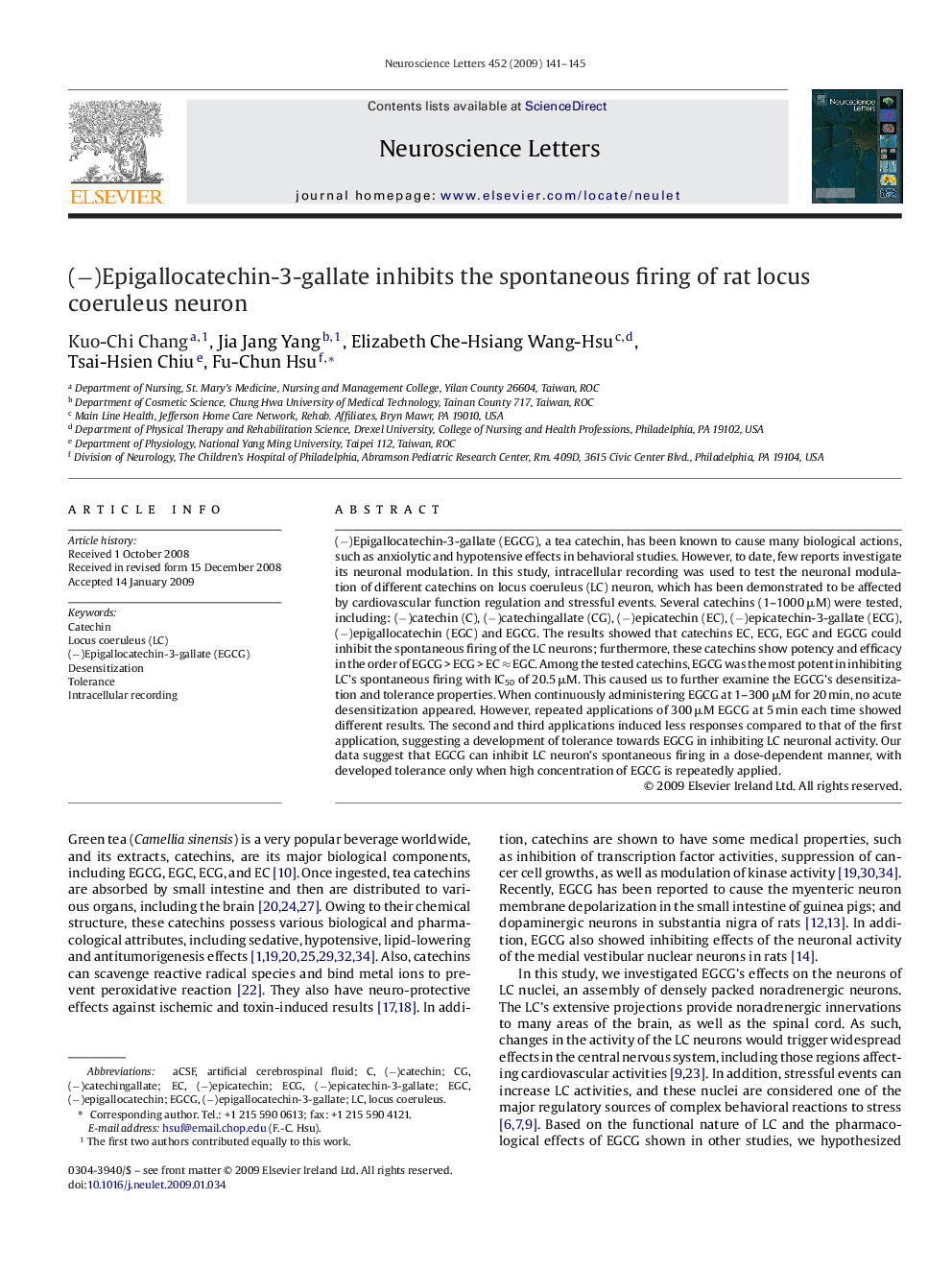| Article ID | Journal | Published Year | Pages | File Type |
|---|---|---|---|---|
| 6285563 | Neuroscience Letters | 2009 | 5 Pages |
Abstract
(â)Epigallocatechin-3-gallate (EGCG), a tea catechin, has been known to cause many biological actions, such as anxiolytic and hypotensive effects in behavioral studies. However, to date, few reports investigate its neuronal modulation. In this study, intracellular recording was used to test the neuronal modulation of different catechins on locus coeruleus (LC) neuron, which has been demonstrated to be affected by cardiovascular function regulation and stressful events. Several catechins (1-1000 μM) were tested, including: (â)catechin (C), (â)catechingallate (CG), (â)epicatechin (EC), (â)epicatechin-3-gallate (ECG), (â)epigallocatechin (EGC) and EGCG. The results showed that catechins EC, ECG, EGC and EGCG could inhibit the spontaneous firing of the LC neurons; furthermore, these catechins show potency and efficacy in the order of EGCG > ECG > EC â EGC. Among the tested catechins, EGCG was the most potent in inhibiting LC's spontaneous firing with IC50 of 20.5 μM. This caused us to further examine the EGCG's desensitization and tolerance properties. When continuously administering EGCG at 1-300 μM for 20 min, no acute desensitization appeared. However, repeated applications of 300 μM EGCG at 5 min each time showed different results. The second and third applications induced less responses compared to that of the first application, suggesting a development of tolerance towards EGCG in inhibiting LC neuronal activity. Our data suggest that EGCG can inhibit LC neuron's spontaneous firing in a dose-dependent manner, with developed tolerance only when high concentration of EGCG is repeatedly applied.
Keywords
Related Topics
Life Sciences
Neuroscience
Neuroscience (General)
Authors
Kuo-Chi Chang, Jia Jang Yang, Elizabeth Che-Hsiang Wang-Hsu, Tsai-Hsien Chiu, Fu-Chun Hsu,
